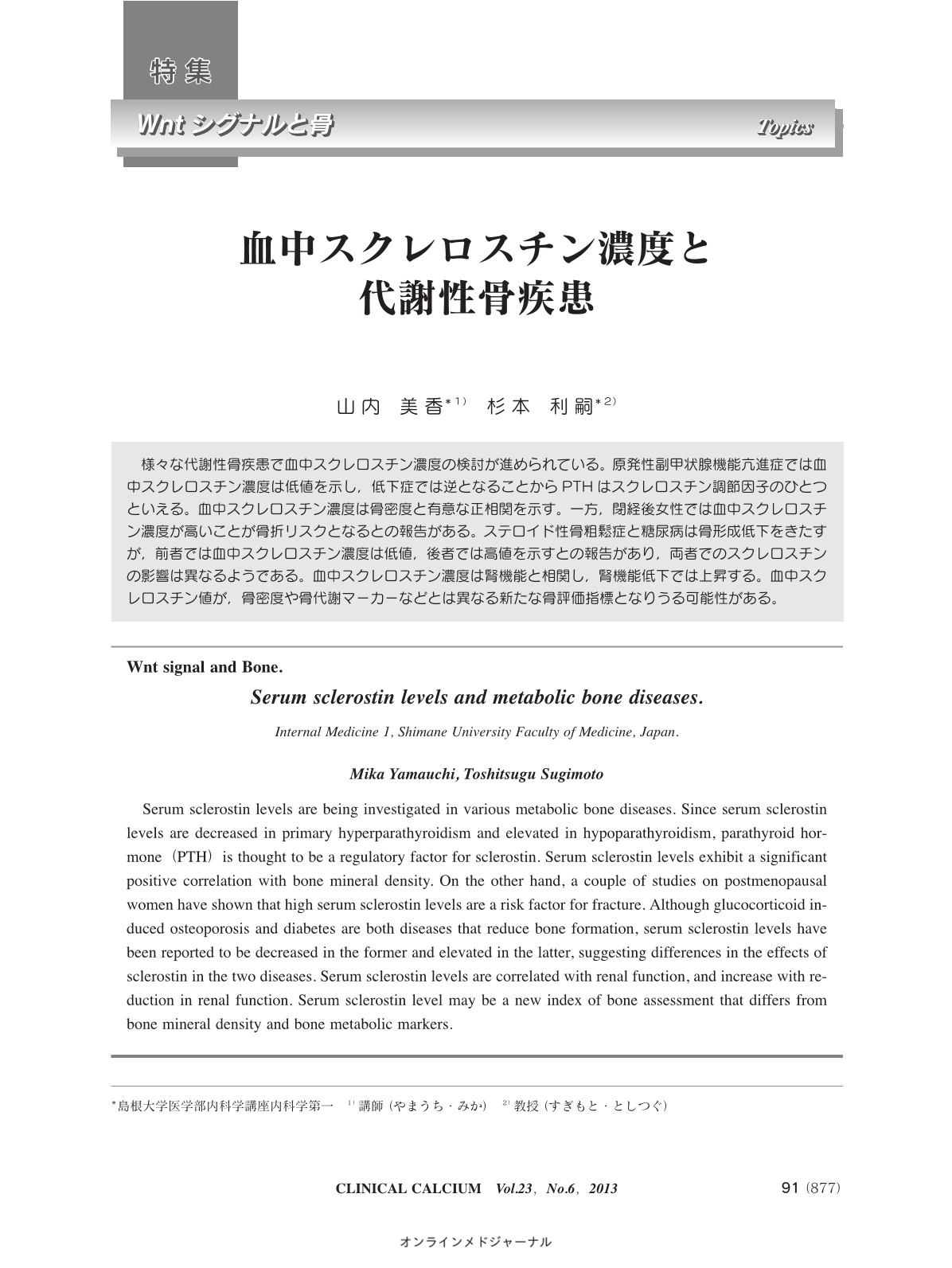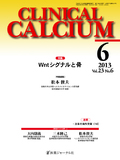Japanese
English
- 有料閲覧
- Abstract 文献概要
- 1ページ目 Look Inside
- 参考文献 Reference
様々な代謝性骨疾患で血中スクレロスチン濃度の検討が進められている。原発性副甲状腺機能亢進症では血中スクレロスチン濃度は低値を示し,低下症では逆となることからPTHはスクレロスチン調節因子のひとつといえる。血中スクレロスチン濃度は骨密度と有意な正相関を示す。一方,閉経後女性では血中スクレロスチン濃度が高いことが骨折リスクとなるとの報告がある。ステロイド性骨粗鬆症と糖尿病は骨形成低下をきたすが,前者では血中スクレロスチン濃度は低値,後者では高値を示すとの報告があり,両者でのスクレロスチンの影響は異なるようである。血中スクレロスチン濃度は腎機能と相関し,腎機能低下では上昇する。血中スクレロスチン値が,骨密度や骨代謝マーカーなどとは異なる新たな骨評価指標となりうる可能性がある。
Serum sclerostin levels are being investigated in various metabolic bone diseases. Since serum sclerostin levels are decreased in primary hyperparathyroidism and elevated in hypoparathyroidism, parathyroid hormone(PTH)is thought to be a regulatory factor for sclerostin. Serum sclerostin levels exhibit a significant positive correlation with bone mineral density. On the other hand, a couple of studies on postmenopausal women have shown that high serum sclerostin levels are a risk factor for fracture. Although glucocorticoid induced osteoporosis and diabetes are both diseases that reduce bone formation, serum sclerostin levels have been reported to be decreased in the former and elevated in the latter, suggesting differences in the effects of sclerostin in the two diseases. Serum sclerostin levels are correlated with renal function, and increase with reduction in renal function. Serum sclerostin level may be a new index of bone assessment that differs from bone mineral density and bone metabolic markers.



